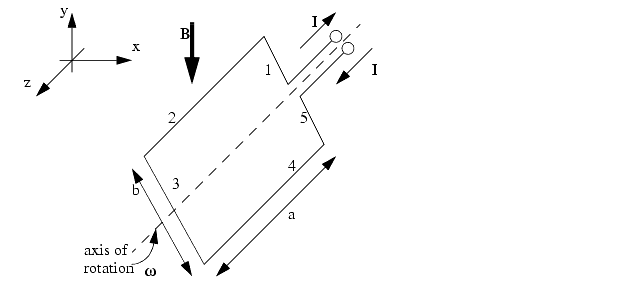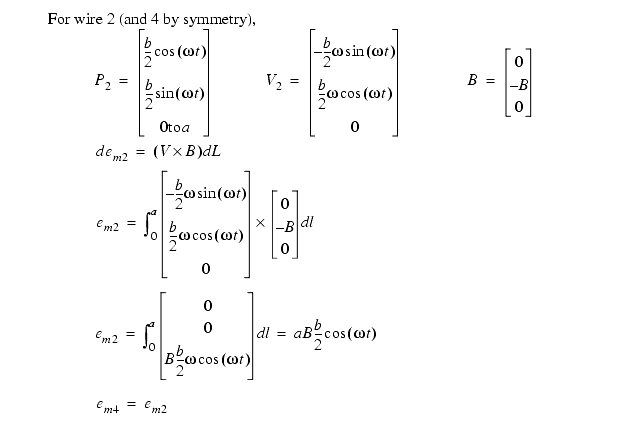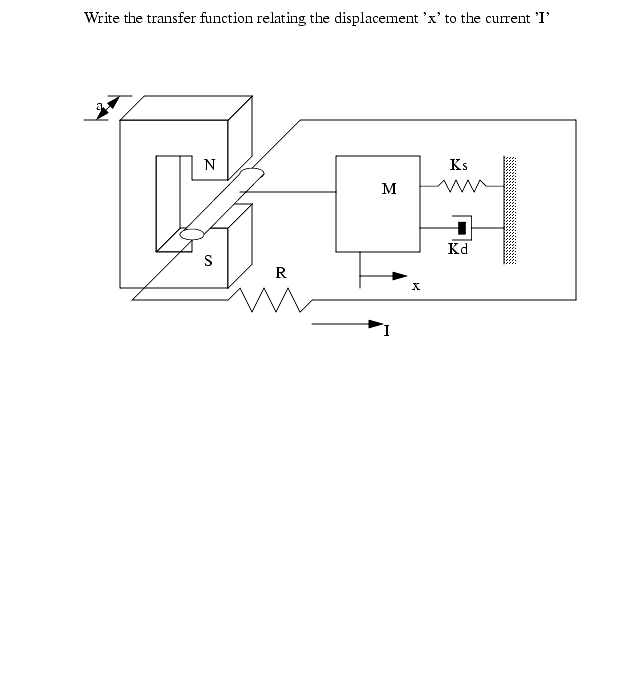11.2 EXAMPLE SYSTEMS
These systems are very common, take for example a DC motor. The simplest motor has a square conductor loop rotating in a magnetic field. By applying voltage the wires push back against the magnetic field.
As can be seen in the previous equation, as the loop is rotated a voltage will be generated (a generator), or a given voltage will cause the loop to rotate (motor).
In this arrangement we have to change the polarity on the coil every 180 deg of rotation. If we didn't do this the loop the torque on the loop would reverse for half the motion. The result would be that the motor would swing back and forth, but not rotate fully. To make the torque push consistently in the same direction we need to reverse the applied voltage for half the cycle. The device that does this is called a commutator. It is basically a split ring with brushes.
Real motors also have more than a single winding (loop of wire). To add this into the equation we only need to multiply by the number of loops in the winding.
As with most devices the motor is coupled. This means that one change, say in torque/force will change the velocity and hence the voltage. But a change in voltage will also change the current in the windings, and hence the force, etc.
Consider a motor that is braked with a constant friction load of Tf.
We still need to relate the voltage and current on the motor. The equivalent circuit for a motor shows the related components.
Practice problem,
Consider a motor with a separately excited magnetic field (instead of a permanent magnet there is a coil that needs a voltage to create a magnetic field). The model is similar to the previous motor models, but the second coil makes the model highly nonlinear.








